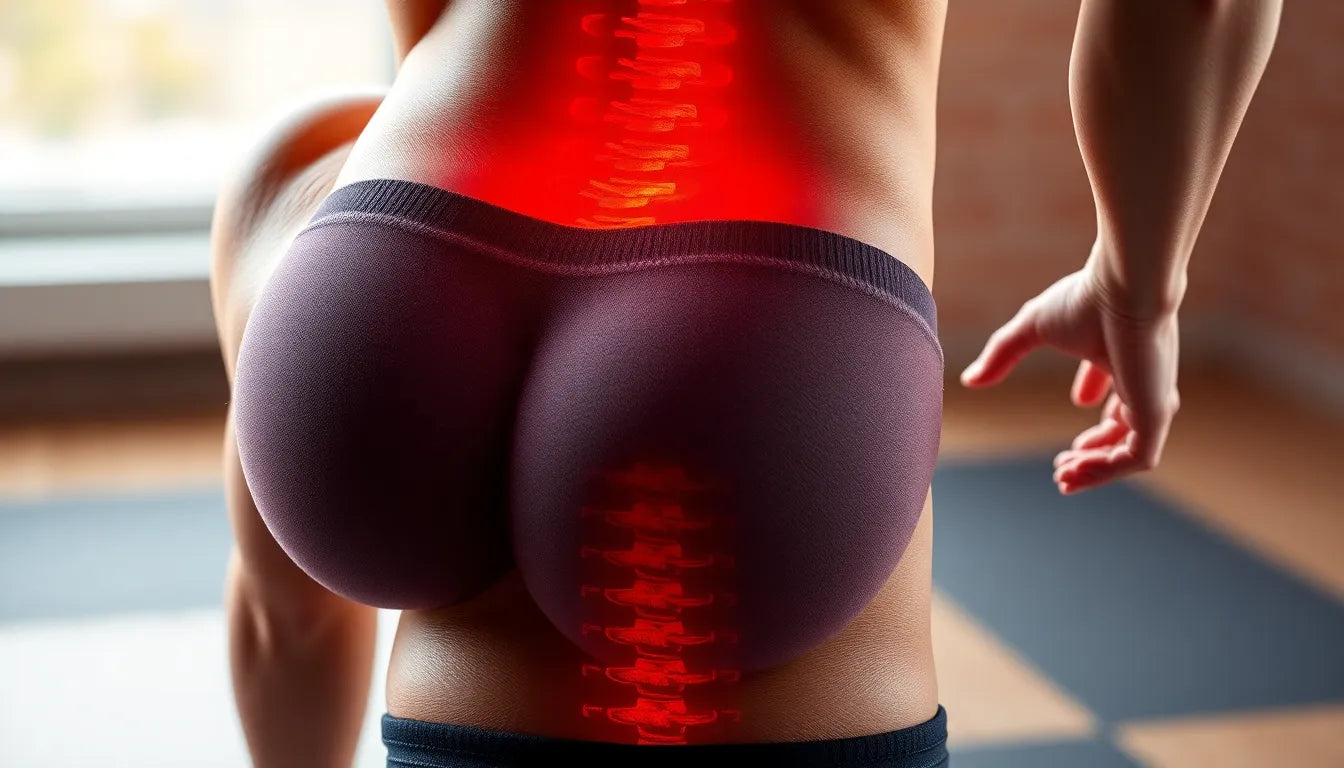Dealing with the discomfort of a herniated disc can be a daunting experience, as it often comes with persistent pain and a significant impact on daily life. A herniated disc occurs when the soft center of a spinal disc pushes through a crack in the tougher exterior casing. This can irritate nearby nerves, leading to pain, numbness, or weakness in an arm or leg, depending on the location of the herniation. One of the most common symptoms is sciatica, characterized by sharp, shooting pain that travels down the leg. Such symptoms can severely limit mobility and overall quality of life, making effective treatment essential.
Understanding steroid injections for herniated disc pain
Among the various treatment options available, steroid injections have gained considerable attention for their role in alleviating pain associated with herniated discs. These injections, often administered as epidural steroid injections, are designed to deliver anti-inflammatory medication directly to the area around the spinal nerves. By reducing inflammation, they can help decrease pain and improve function, offering patients much-needed relief.
The use of steroid injections has become increasingly popular as more individuals seek non-surgical interventions for managing herniated disc pain. This trend aligns with a broader movement towards conservative treatment approaches, which prioritize less invasive methods before considering surgical options. Steroid injections provide a balance between immediate pain relief and long-term management strategies, making them an appealing choice for many patients.
The growing preference for non-surgical solutions
In recent years, there has been a noticeable shift toward non-surgical solutions for herniated disc pain, driven by both patient preference and medical recommendations. Many individuals are understandably hesitant to undergo surgery due to the risks and recovery time involved. Steroid injections offer a compelling alternative, providing significant pain relief without the need for invasive procedures. This approach allows patients to maintain their daily activities and improve their quality of life while exploring other supportive therapies and lifestyle changes.
While steroid injections do not cure the underlying herniation, they play a crucial role in the broader context of pain management. By offering temporary relief, these injections can help reduce reliance on pain medications, such as opioids, and delay or even avoid the need for surgery. Patients are encouraged to use this period of relief to engage in physical therapy and other rehabilitative measures, which can contribute to long-term recovery and prevention of future issues.

Lumbar support belt
Støtter og stabiliserer lænden – ideel ved diskusprolaps, iskiassmerter og rygproblemer.
Scientific research and clinical studies on steroid injections
Scientific research and clinical studies have played a crucial role in understanding the effectiveness of steroid injections for herniated disc pain. Notably, a study indexed in PubMed highlighted that epidural steroid injections show a success rate ranging from 42% to 56%, which, while lower than the 92% to 98% success rate of surgical discectomy, still provides a valuable non-surgical alternative for many patients. This data underscores the importance of considering individual patient needs and treatment goals when deciding on a course of action.
Further insights from the SPORT study, a comprehensive investigation into spinal treatments, reveal that while steroid injections may not significantly enhance long-term outcomes, they do offer the advantage of potentially avoiding surgery. This finding is particularly relevant for patients who are either not candidates for surgery or prefer to explore less invasive options first. The ability to delay or avoid surgery can be a significant consideration, especially when factoring in recovery times and potential surgical risks.
Evidence-based efficacy of steroid injections
Recent meta-analyses, such as the one published in Frontiers in Neurology in 2024, have provided additional evidence supporting the short to medium-term efficacy of steroid injections in relieving sciatica caused by lumbar disc herniation. This meta-analysis synthesizes results from multiple studies, offering a comprehensive view of how these injections can effectively reduce pain and improve function in the months following treatment.
Moreover, data from Spine-health.com documents that 40% to 80% of patients experience more than a 50% improvement in pain and functional outcomes, lasting from three months to a year. Such statistics are encouraging for patients seeking a temporary yet meaningful reprieve from the debilitating effects of a herniated disc.
Immediate and practical benefits for patients
Clinical practice often highlights the immediate benefits of steroid injections, particularly in terms of pain relief and enhanced mobility. According to the Vita Medica Institute, these injections are positioned as a beneficial option for those needing quick relief to resume daily activities and improve their quality of life. This immediate relief can be crucial for patients who are struggling with severe pain that limits their ability to work, exercise, or perform daily tasks.
Additionally, the temporary nature of the relief provided by steroid injections can be strategically used to reduce opioid dependence. By alleviating pain, patients can avoid or minimize the use of strong pain medications, which are often associated with significant side effects and potential for addiction. This aspect of treatment is particularly important in the current medical landscape, where there is a strong emphasis on reducing opioid prescriptions.
Approaching treatment with a balanced perspective
When considering steroid injections as a treatment option, it is essential to adopt a balanced perspective that weighs the benefits against potential limitations. Medical guidelines typically recommend trying conservative treatments for at least six weeks before considering injections. This approach ensures that patients have explored less invasive methods first, aligning with the broader trend towards conservative care.
While steroid injections offer temporary relief, they do not address the underlying cause of the herniated disc. However, the quality of life improvements experienced during the recovery period can be significant. Patients often report being able to engage more fully in physical therapy and other rehabilitative measures, which can contribute to longer-term recovery and prevent re-injury.
Ultimately, the decision to use steroid injections should be made collaboratively between patients and healthcare providers, considering individual circumstances, treatment goals, and the potential for improved quality of life. By understanding the scientific evidence and practical benefits, patients can make informed decisions about their treatment options.
Post-injection care and ergonomic solutions
After receiving a steroid injection for herniated disc pain, maximizing its benefits involves more than just resting. Integrating ergonomic solutions and proper body mechanics into daily activities can enhance recovery and prolong relief. By making small adjustments in how you move and rest, you can support the healing process and reduce the risk of aggravating the condition.
One effective strategy is to focus on workplace ergonomics. Ensuring that your workstation is set up to promote good posture can alleviate unnecessary strain on your back. Adjust your chair and desk height so that your feet rest flat on the floor and your screen is at eye level to avoid hunching. Additionally, consider using a lumbar support cushion to maintain the natural curve of your spine while sitting.
Sleep positioning is another critical aspect of recovery. Sleeping on your side with a pillow between your knees can help keep your spine aligned and reduce pressure on your herniated disc. If you prefer sleeping on your back, placing a pillow under your knees can relieve lower back tension. These adjustments can significantly impact your comfort and pain levels, especially during the night.

Men's Posture Shirt™ - Black
Patenteret T-shirt, der støtter ryggen og hjælper dig til bedre holdning og mindre smerte.
Long-term pain management integration
Beyond immediate post-injection care, incorporating ergonomic aids into your daily routine can play a pivotal role in long-term pain management. Ergonomic tools such as standing desks, supportive footwear, and adjustable seating can help maintain spinal health and prevent re-injury. These aids are particularly beneficial during the 3-6 month period when the effects of steroid injections are most pronounced.
Regular physical therapy and exercise are also crucial components of a comprehensive pain management strategy. Engaging in low-impact exercises like swimming or walking can strengthen the muscles supporting your spine, improving stability and reducing the likelihood of future herniations. Working with a physical therapist can provide personalized guidance on exercises that align with your recovery goals.
Frequently Asked Questions
What are the potential side effects of steroid injections?
Common side effects of steroid injections include temporary pain at the injection site, headache, and increased blood sugar levels. Rare complications can include infection, nerve damage, or bleeding. It is important to discuss potential risks with your healthcare provider before proceeding with treatment.
How often can I receive steroid injections for a herniated disc?
Typically, healthcare providers recommend limiting steroid injections to a few times a year. This guideline helps minimize risks associated with repeated steroid use, such as weakening of the bones or tendons near the injection site.
Do steroid injections cure herniated discs?
Steroid injections do not cure herniated discs; they are designed to alleviate symptoms by reducing inflammation around the affected nerves. The underlying disc herniation remains unchanged, so injections are often part of a broader treatment plan that includes physical therapy and lifestyle changes.
How soon can I expect relief after a steroid injection?
Relief from pain may begin within a few days to a week after receiving a steroid injection. The timing and degree of relief can vary among individuals, depending on factors such as the severity of the herniation and individual response to the medication.
Are there alternatives to steroid injections for herniated disc pain?
Yes, there are several alternatives to steroid injections, including physical therapy, oral pain medications, and surgical options in more severe cases. Each treatment has its own benefits and risks, so it is important to work with a healthcare provider to determine the best approach for your specific condition and needs.
Källor
- Stanford Medicine News Center. (2011). ”Biomarker may signal whether common back pain treatment will work, doctor finds.”
- Cohen, S.P., et al. (2012). ”Epidural steroid injections, conservative treatment, or combination treatment for cervical radiculopathy: a multicenter, randomized, comparative-effectiveness study.” PMC.
- Frontiers in Neurology. (2024). ”Meta-Analysis on the Efficacy of Steroid Injections for Sciatica.”
- Pain and Spine Specialists. ”Epidural Steroid Injections for Herniated Discs.”
- Hospital for Special Surgery. ”Epidural Injections FAQs.”
- Cleveland Clinic. ”Lumbar Epidural Steroid Injection.”
- Urits, I., et al. (2020). ”Epidural Steroid Injections.” NCBI Bookshelf.
- Cleveland Clinic. ”Epidural Steroid Injection (ESI).”
- American Family Physician. (2022). ”Epidural Steroid Injections for Low Back Pain.”
- Mayfield Clinic. ”Epidural Steroid Injection.”
- HSSH Health. ”The Dark Side of Epidural Steroid Injections: Risks and Complications.”
- Spine-health. ”Epidural Steroid Injections: Risks and Side Effects.”
- Brigham and Women's Hospital. ”Epidural Steroid Injections.”


















